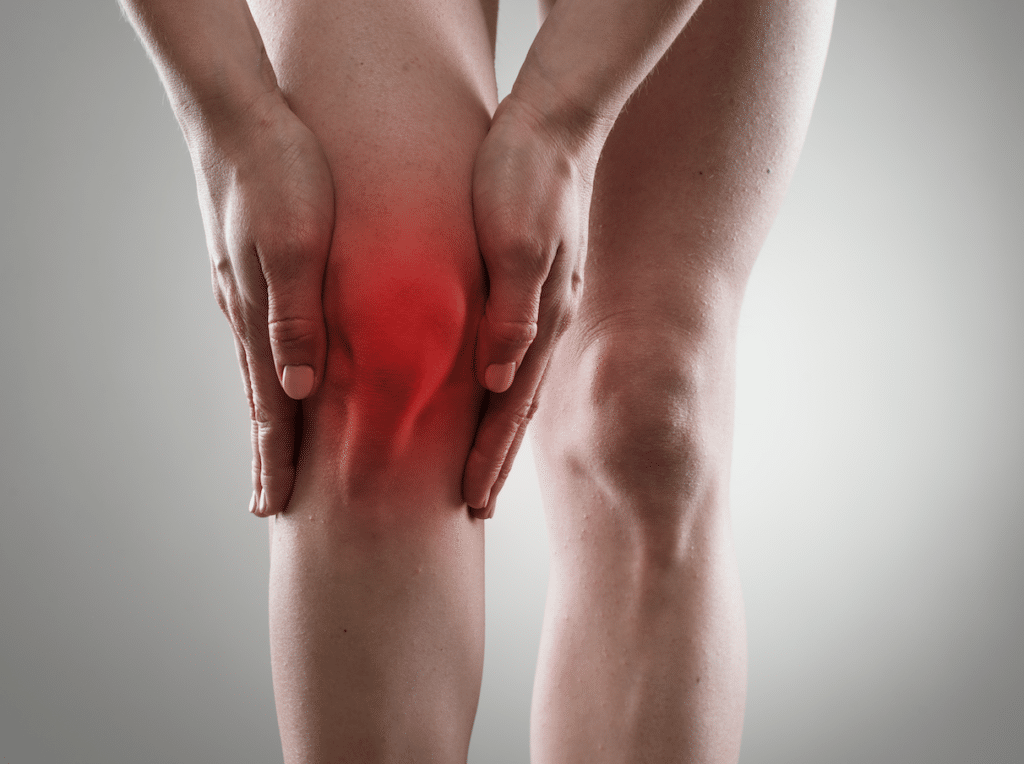
Red Light Therapy has been proven to be effective in treating a number of conditions, from acne to seasonal affective disorder. As a safe and minimally invasive solution, infrared light offers an effective alternative to traditional drugs as a method of reducing inflammation. LLLT is FDA-approved for treating conditions like chronic joint pain, hair loss, and even many skin conditions which help anti-aging.
The Roots of Red Light Therapy
In the early 1990s, NASA began studying red light spectrums in order to determine the beneficial effects on growing food in space. 1
Researchers around the world took note, and increasing amounts of research have been devoted to the effects of red light on bio organisms. Specifically, the wavelengths of light between 660nm (red) and 890nm (infrared) were found to be “bioactive,” meaning having an effect on living tissue.
The basic process of red light and near-infrared (NIR) infrared therapy involves exposing cellular material to red and NIR light by means of low light lasers or LED lights. The process is known by many names, including:
- photobiomodulation (PBM)
- low-level light therapy (LLLT)
- soft laser therapy
- cold laser therapy
- biostimulation
- photonic stimulation
- low-power laser therapy (LPLT)
How Red Light Affects Bio Organisms
The premise of red light therapy is that the wavelengths of light cause a biochemical effect in cells that boost the energy production of mitochondria. A cell’s energy is created in the mitochondria as adenosine triphosphate (ATP).
You can think of the mitochondria as the powerhouse of the cell. By increasing ATP production, the cell has more energy to function more efficiently and repair damage.
Red light therapy doesn’t cause damage to the skin’s surface, which differs from laser or intense pulsed light (IPL) therapy. Light wavelengths work by causing damage to the outer layer of skin, inducing tissue repair. Differently, red light penetrates only about 5 millimeters into the skin, directly stimulating cell regeneration and collagen production.
LED light therapy is also thought to contribute to hormesis, building up the cell’s anti-oxidant and anti-inflammatory defense systems.
Check out my recent podcast for more information on the science behind Red Light Therapy.
What is Inflammation?
Medical News Today defines inflammation as, “a defense mechanism in the body. The immune system recognizes damaged cells, irritants, and pathogens, and it begins the healing process. When something harmful or irritating affects a part of our body, there is a biological response to try to remove it. 2
The signs and symptoms of inflammation can be uncomfortable but are a show that the body is trying to heal itself.”
The response of the immune system involves the release of antibodies and proteins, as well as increased blood flow to the damaged area. This process generally lasts for a few hours to a few days in what is known as acute inflammation.
When the process continues, as is the case with chronic inflammation, the lingering response leaves your body in a constant state of alert.3
Symptoms of Inflammation
In cases of acute inflammation, there are noticeable symptoms, such as joint pain, back pain, redness, and swelling. Chronic inflammation symptoms are much less noticeable and less likely to be diagnosed. They include:
- fatigue
- fever
- mouth sores
- rashes
- abdominal pain
- chest pain
- joint pain
Symptoms can range from mild to severe and can last for extended periods of time. Pain is caused by certain chemicals, such as bradykinin and histamine, that your body releases in order to stimulate nerve endings and warn of danger.

Causes of Acute Inflammation
As inflammation is your body’s response to an irritant, the causes of inflammation are as varied as the possible irritants we may encounter.
While our first instinct to inflammation is to try to decrease it, the body is merely trying to heal itself. In the case of wounds, an irritation becomes inflammation, followed by the discharge of pus, and then the granulation stage, which allows new tissue to be formed in the wound.
The three main processes before and during acute inflammation are:
- The small branches of arteries enlarge when supplying blood to the damaged region, resulting in increased blood flow.
- Capillaries become easier for fluids and proteins to infiltrate, meaning that they can move between blood and cells.
- The body releases neutrophils. A neutrophil is a type of white blood cell filled with tiny sacs that contain enzymes and digest microorganisms.
Inflammation does not necessarily mean there is an infection, but an infection can cause inflammation.
Diseases, conditions, and situations can result in acute inflammation. Medical News Today offers the following examples, including:
- acute bronchitis
- infected ingrown toenail
- a sore throat from a cold or flu
- a scratch or cut on the skin
- high-intensity exercise
- acute appendicitis
- dermatitis
- tonsillitis
- infective meningitis
- sinusitis
- a physical trauma
Causes of Chronic Inflammation
Chronic inflammation is a long-term inflammation that lasts months or even years. The causes of chronic inflammation include:
- Failure to eliminate whatever was causing an acute inflammation
- An autoimmune disorder attacking normal, healthy tissue, mistaking it for a pathogen
- Long-term exposure to an irritant, such as a chemical
Certain diseases and conditions include chronic inflammation as part of their pathology. These conditions include:
- asthma
- chronic peptic ulcer
- tuberculosis
- rheumatoid arthritis
- periodontitis
- ulcerative colitis and Crohn’s disease
- sinusitis
- active hepatitis
If left untreated, inflammation can lead to more serious conditions, such as some cancers, periodontitis, and atherosclerosis.
Drug Treatments for Inflammation
Inflammation is generally treated with NSAIDs, or non-steroidal anti-inflammatory drugs, steroids, or supplements.
NSAIDs
Over the counter varieties of NSAIDs include aspirin, ibuprofen (Advil), and naproxen (Aleve). According to the Cleveland Clinic, common side effects of NSAIDs include:
- Stomach pain and heartburn
- Stomach ulcers
- A tendency to bleed more, especially when taking aspirin. Your doctor might tell you to stop taking NSAIDs before surgery. Ask your doctor before taking NSAIDs if you are on blood-thinning medications (such as Coumadin).
- Headaches and dizziness
- Ringing in the ears
- Allergic reactions such as rashes, wheezing, and throat swelling
- Liver or kidney problems. If you have any kidney problems, you shouldn’t take NSAIDs without checking with your doctor.
- High blood pressure
- Leg swelling
- Gas
- Feeling bloated
- Nausea
- Vomiting
- Diarrhea and/or constipation4
Steroids
The use of steroids is often a treatment for fighting inflammation. Steroids decrease inflammation and suppress the immune system, which is helpful when it starts attacking healthy tissue.
But long-term use of steroids can lead to vision problems, high blood pressure, and osteoporosis. When prescribing corticosteroids, your doctor will weigh the benefits and risks with you.” 5
Supplements
Some supplements have shown promise in treating inflammation, including fish oil, lipoic acid, and curcumin. Several spices are also noted for relieving inflammation, including ginger, garlic, turmeric, and cayenne. 6
How Red Light Therapy Helps with Inflammation Treatment
Red light and near-infrared (NIR) light treatment stimulates cells and reduces oxidative stress, enabling your body to make more useable energy and power itself to speed healing and lower inflammation and pain.
According to Dr. Michael Hamblin of Harvard Medical School and Massachusetts General Hospital, one of the leading photomedicine researchers, natural red and NIR light are, “a very mild form of stress that activates protective mechanisms in the cells…for instance, when longer wavelengths or visibly red light hits the skin, it nudges mitochondria to make energy more efficiently and boost production of healing anti-inflammatories or disease-fighting antioxidants.” 7
Post-surgery Inflammation and Pain Relief
A phototherapy clinical study published in Lasers in Medical Science in 2018 looked at the acute inflammation of patients recovering from hip arthroplasty surgery. 8
The results of the randomized, triple-blind, placebo-controlled study found that patients receiving red light therapy saw a greater reduction in the pain and swelling associated with the surgery. The study concluded that infrared light, “is effective in decreasing pain intensity and post-surgery inflammation.”
Muscles and Soreness Due to Exercise
Many studies have been conducted to analyze the effectiveness of red light therapy for inflammation related to exercise and muscle soreness. A study conducted in 2008 found that red light therapy had a beneficial effect on delayed onset muscle soreness. 9
A 2010 clinical trial found that the use of red light therapy before strenuous workouts reduced the amount of pain and inflammation. 10
Reduced Oral Inflammation
A red light treatment study published in 2018 looked at the therapeutic effects of red light on the inflammation of periodontal cells associated with orthodontic and dental treatments. Researchers concluded that the study “demonstrated that [light therapy] inhibits inflammation, induced by endotoxins from E. coli and P. gingivalis.”11
Possible Side-effects of Red Light Therapy
Red light and NIR light therapy is a natural process and is not harmful to the skin the way UV light can be. There are virtually no risks involved with red light exposure. Anyone considering red light therapy should first discuss the matter with their doctor to determine the best method for treatment.
Additional Health Benefits of Red Light Therapy
Overall, the low-level laser therapy for treating inflammation are extensive. Beyond reducing inflammation, red light therapy has been shown to rejuvenate the skin on a cellular level by the following:
- increasing collagen production in the skin, which gives the skin its elasticity
- increasing fibroblast production, which helps collagen density and skin rejuvenation
- increasing circulation between blood vessels and tissue cells
- protecting skin cells from damage such as toxins and the sun
- increasing mRNA in the cells, which helps stimulate the cell
- Helping rosacea
- reducing fine lines and skin tone
- reducing wrinkle severity and stretch marks
- increased wound healing
Red light and infrared light are an effective way to add benefits to your skin care routine and reduce inflammation. While it is generally safe, it is always good to speak to your doctor before beginning any new regimen. You can check out my blog on the best red light therapy devices and how to use red light therapy home devices. Always wear protective eyewear when receiving treatments when seeking treatment from light devices and, always, speak to a dermatologist first.
References[+]




